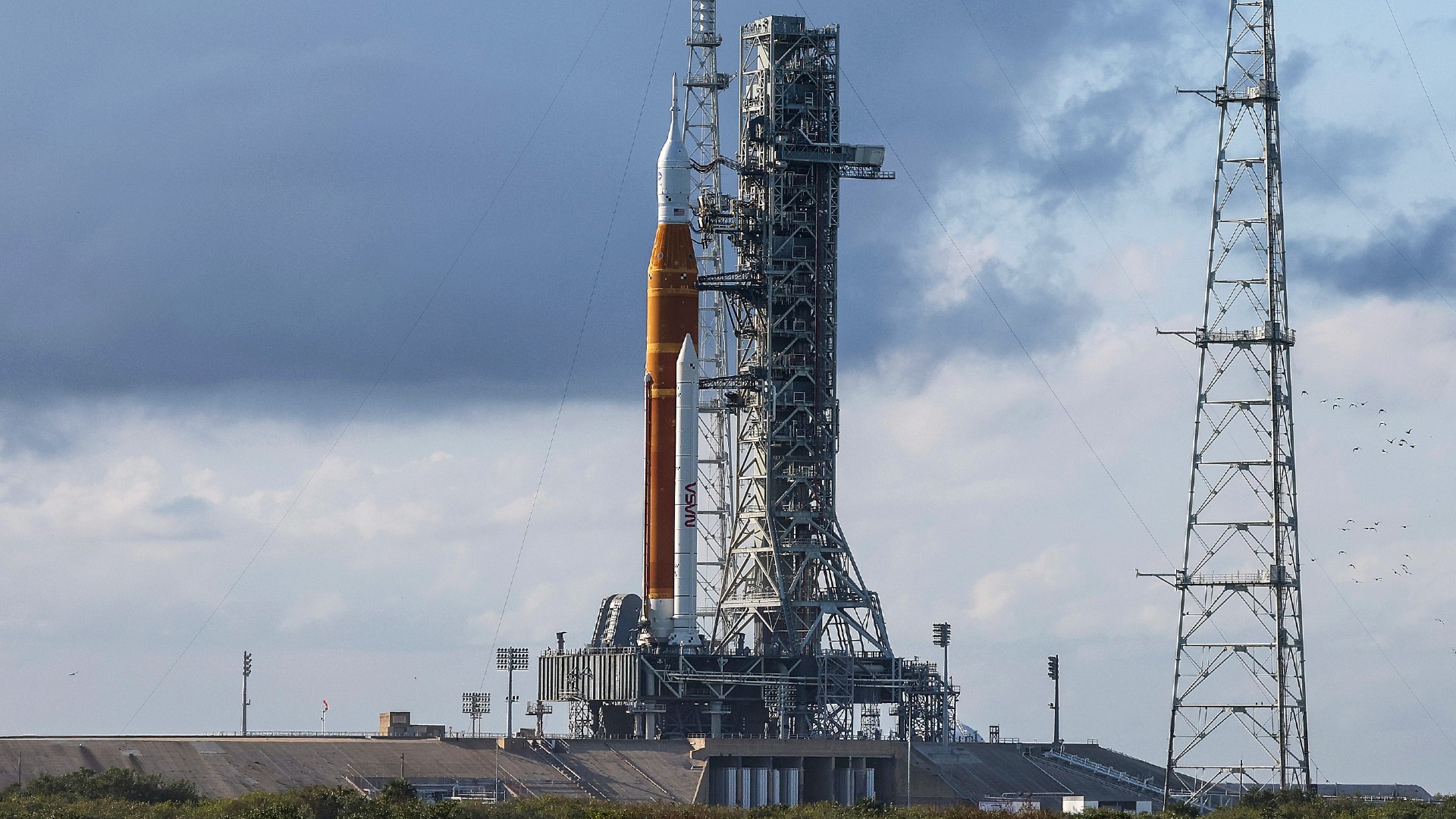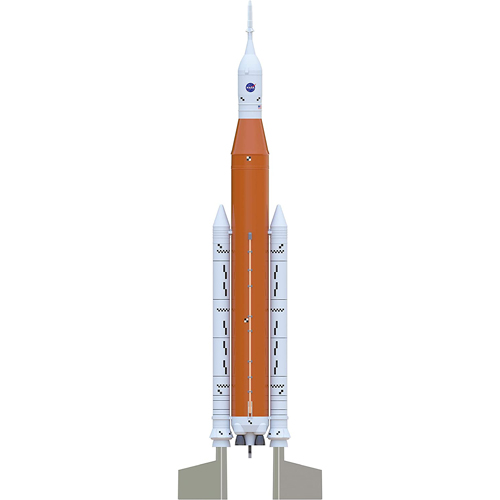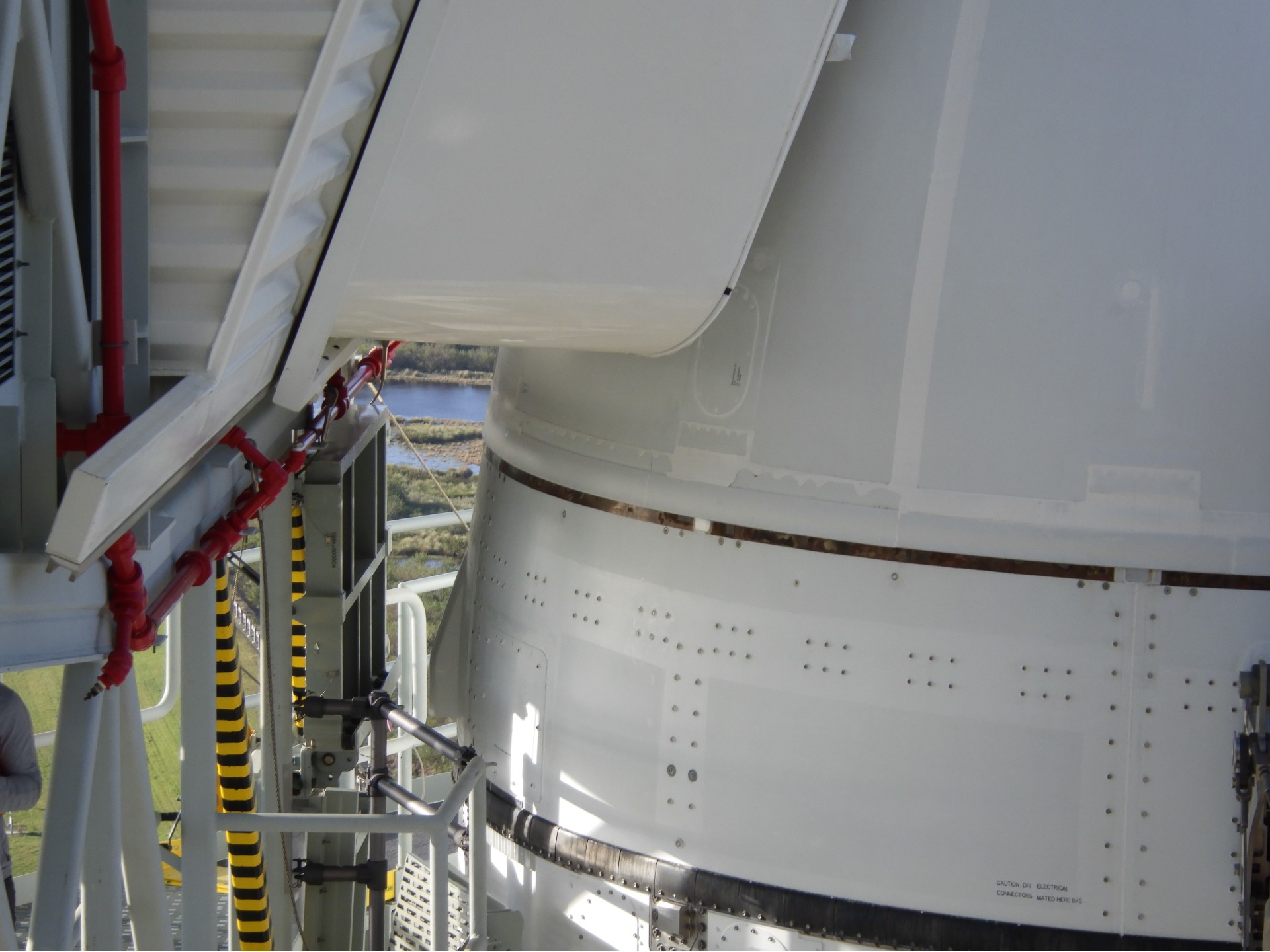NASA clears Artemis 1 moon rocket for Nov. 16 launch despite storm damage
"There's no change in our plan to attempt to launch on the 16th."

CAPE CANAVERAL, Fla. - NASA's Artemis 1 moon mission will once again attempt to launch after all.
Mission managers met on Monday (Nov. 14) to discuss the flight readiness of the Artemis 1's Space Launch System (SLS) rocket and Orion spacecraft following slight damage caused by Hurricane Nicole, which was swiftly downgraded to a tropical storm after making landfall, on Thursday (Nov. 10). Despite the fact that a band of insulating caulking on Orion was damaged by high winds during the storm's landfall, Mike Sarafin, Artemis mission manager at NASA headquarters in Washington, said "there's no change in our plan to attempt to launch on the 16th" during a media teleconference today (Nov. 14).
"The unanimous recommendation for the team was that we were in a good position to go ahead and proceed with the launch countdown," added Jeremy Parsons, deputy manager of NASA's Exploration Ground Systems program at Kennedy Space Center (KSC) in Florida. If all goes according to plan during additional preflight checks and the cryogenic fueling process on Tuesday (Nov. 15), the Artemis 1 mission will launch from Launch Pad 39B at 1:04 a.m. EST (0604 GMT) on Nov. 16. You can watch the countdown, fueling and launch of Artemis 1 live online here on Space.com courtesy of NASA.
Related: Watch NASA's Artemis 1 moon rocket launch on Nov. 16 online for free
Read more: NASA's Artemis 1 moon mission: Live updates

You can launch a Space Launch System of your own with this Estes NASA SLS model rocket for a 1:200 scale version of NASA's moon megarocket. Read more about it.
One of the main areas of concerns was a strip of insulating caulking known as RTV which is designed to smooth out a slight gap in the exterior of the Orion spacecraft. High winds during Hurricane Nicole stripped a 10-foot (3-meter) section of RTV off of Orion. After discovering the damage, there were concerns that the missing caulking could create unwanted airflow that could lead to excess heating during launch and flight. After reviewing the issue and performing multiple analyses, Artemis 1 mission managers feel that the vehicle is still flightworthy.
"We looked across the entire vehicle stack from the Orion spacecraft all the way down to the base of the stack and we agreed that the risk is bounded by current hazards and hazard reports that we have out there," Sarafin told reporters.
"That said, if we have an issue that occurs that would cause us to meet one of our no-go criteria, it may not be our day," Sarafin added.
Get the Space.com Newsletter
Breaking space news, the latest updates on rocket launches, skywatching events and more!

Still, Parsons added that despite there still being a chance of mission managers discovering issues that would prevent a launch attempt on Wednesday (Nov. 16), there is a great deal to be proud of in terms of how the Artemis 1 teams have persevered thus far through the mission's many setbacks.
"And I will tell you, the team is firing on all cylinders at this point, and so I just can't be more proud of them. Because I think if you were to ask me a couple of weeks ago, would we go through a storm like Hurricane Nicole and then be able to turn around and have cleared the vehicle and be in good shape, I would have said hey, chances are probably low. But this team has really just been firing on all cylinders," Parsons said.
Artemis 1 will see an uncrewed Orion spacecraft launch atop the SLS vehicle into lunar orbit. The mission is intended to lay the groundwork for future Artemis missions that will see humankind return to the moon with the eventual goal of establishing a sustainable human presence there.
Artemis 2 will see a human crew placed into orbit around the moon no earlier than 2023, while Artemis 3, scheduled for 2024 or 2025, will see astronauts leave bootprints on the lunar surface once again.
Follow Brett on Twitter at @bretttingley. Follow us on Twitter @Spacedotcom or on Facebook.
Join our Space Forums to keep talking space on the latest missions, night sky and more! And if you have a news tip, correction or comment, let us know at: community@space.com.

Brett is curious about emerging aerospace technologies, alternative launch concepts, military space developments and uncrewed aircraft systems. Brett's work has appeared on Scientific American, The War Zone, Popular Science, the History Channel, Science Discovery and more. Brett has English degrees from Clemson University and the University of North Carolina at Charlotte. In his free time, Brett enjoys skywatching throughout the dark skies of the Appalachian mountains.









